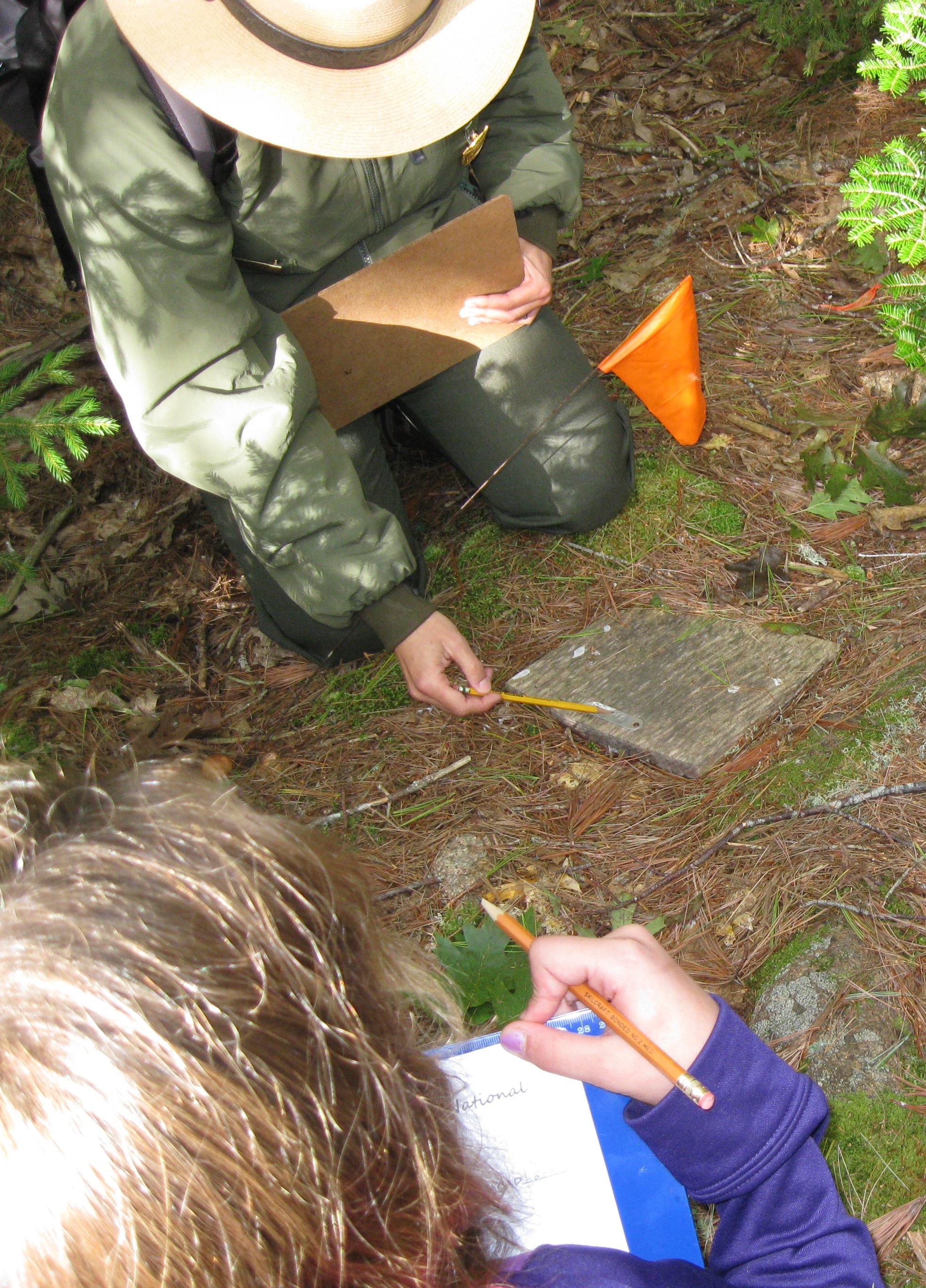Field Trips
- Grade Level:
- Upper Elementary: Third Grade through Fifth Grade
- Subject:
- Science
- State Standards:
- NATIONAL/STATE STANDARDS:2007 Maine Learning Results
Science & Technology: Universal Themes A1 – A4, Scientific Inquiry B1, Scientific Enterprise C1 – C4, Living Environment E1 and E2
Mathematics: A1, B1
Health & Physical Educ.:A4, I1 and I2
Social Studie
National parks provide good habitats for many kinds of animals, yet natural resources in parks are threatened from contaminants and other environmental concerns. The young CSI investigators play food web games showing how toxins like mercury or DDT get into the park and accumulate from prey to predator. We take a tour of the salamander's forest habitat and help the park "monitor" its salamander population, recording data in a field notebook. At the pond we collect and identify dragonfly larvae, a species that can help park scientists tell if Acadia National Park watersheds are healthy. From these field experiences, students are introduced to the important role science plays in conservation decision-making.
Description
This hands-on program is an opportunity for students to participate as community scientists in an ongoing research project studying ten water bodies in Acadia National Park. They will assist the ranger in collecting water, sediment, and dragonfly larvae from the shoreline and near-shore bottom of a lake, pond, or stream, actively using nets to search through mud and organic detritus on the lake-bottom to locate the dragonfly larvae, which must be collected without touching them to avoid contamination with mercury from human hands. Students will learn about the study design, the identification of several families of dragonfly larvae, mercury pollution, and preliminary results from previous years. They will also have the opportunity to identify and learn about numerous other species and groups of interesting aquatic invertebrates such as mayflies, caddisflies, damselflies, etc.
The collected dragonfly larvae can be analyzed in a laboratory for their mercury content, and the data will be used to better understand the way that inorganic mercury is processed as it travels through the landscape, and to learn whether dragonfly larvae are good indicators of ecosystem health. More than forty national parks across the United States are enlisting community scientists to help with the field work as part of study, which is giving scientists a broad picture of the extent of mercury contamination across the country. This is a unique opportunity to contribute toward that goal, and to have fun discovering the many fascinating creatures that live in our waters at the same time.
Contact
Acadia Education Staffemail us
207-288-8823
Last updated: August 20, 2025

